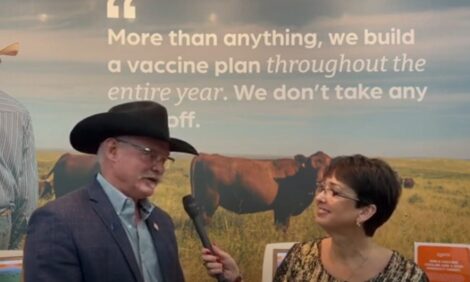



Mastitis, a challenge in the dairy farm industry – what’s next?
The role of diagnostics in economically treating cowsTo date, mastitis is still a subject prevailing in the dairy farm industry, as it affects dairy cow’s health and ultimately milk production. A high percentage of cows infected with mastitis, an infection of the milk-producing mammary glands, is one of the most prevalent and costly diseases in farms, as it could cause decreased milk production, and increase probability of a mastitis outbreak on the farm.
As farm handling and the milking process involves sharing of equipment used for the dairy cattle, the bacteria spreads easily. Cows infected with mastitis need antibiotics treatment, and this will result in their milk not being suitable for human consumption.
The amount of milk production lost can vary depending on breed, parity, herd size and region, but in general it is about a 2.5% drop [1]. With mastitis affecting dairy cows, it will be a challenge to meet the growing global demand for milk which is expected to increase by 4.3% in 2024 [2]. Even though milk supply comes from buffalo, goat, sheep and camels too, 81% of the world’s milk production is from cows [3].
Best practice guidelines provided for dairy farmers may help with mastitis issues to a certain extent, but ultimately it is imperative to find the best solution. Good animal health and farm management help towards maintaining mastitis-free cattle. Despite having a well-managed herd, however, it is expected that one third of all dairy cows have mastitis [4]. Therefore, managing and treating this problem efficiently is key.
As mastitis is caused by pathogens, only antibiotics can treat animals which test gram positive. Farmers must still utilise antibiotics, despite the industry wanting to move away from antibiotics due to environmental concerns. To address this issue, and to efficiently manage antibiotics in a more contained approach, the best solution would be to only treat the infected cattle that need therapy.
It has been common practice for the whole herd to be given antibiotics even though only some of the cows are infected. Using antibiotics unnecessarily not only increases the farm’s operating costs but also contributes toward environmental problems in the long run. Farmers often use a blanket method as they can’t determine which cows are gram positive and which are not – this is crucial information as antibiotics are most effective on gram positive cases.
It is imperative to identify the cows which are gram positive to administer the right antibiotics and to only treat cows which are gram positive. These cows are usually diagnosed based on abnormal milk colour, and with presence of other elements. Diagnostic tools used are usually the Somatic Cell Count (SCC) and California Mastitis Test (CMT) which help identify the infection. Although these two tests are widely used, they are not able to identify gram positive cows.
To determine the right treatment, the diagnostic stage is critical in the treatment process. Current knowledge suggests that only infections caused by gram positive bacteria will benefit from antibiotic therapy. Having a simple diagnostic tool that would enable farmers to determine gram positive cows and treat them as needed, would prevent the over-use of antibiotics.
Cost efficiency is crucial when running a farm, especially with the rising cost of feed, hence only treating the gram positive cows would be the best solution. This would not only help with cost efficiency but also with ensuring consistent and safe milk production, to provide the supply needed to fulfil the market’s demand.
In line with that, looking at the environmental impact related to dairy farming, greenhouse gases produced is also a concern. Healthy herds produce less greenhouse gases as they synthesize and breakdown nutrients more effectively. Therefore, it is essential that dairy cows are kept healthy and mastitis-free to drive the farm’s productivity, efficiency and sustainability.
| References | ||||
|---|---|---|---|---|
| 1 Becker, C. | ||||
| (2022) | Mastitis-Causing Pathogens and How They Get on Your Farm.. PennState Extension. | |||
| 2 “Milk – Worldwide”. | ||||
| . Statista.com. | ||||
| 3 | ||||
| Dairy and dairy products – Market situation.. OECD-FAO Agricultural Outlook 2020-2029. | ||||
| 4 Lago, A., and S.M. Godden | ||||
| (2018) | Use of Rapid Culture Systems to Guide Clinical Mastitis Treatment Decisions. Vet. Clin. North Am. Food Anim. Pract. | 34:389-412 | Doi:10.1016/j.cvfa.2018.06.001 |



